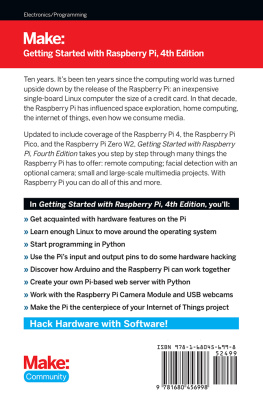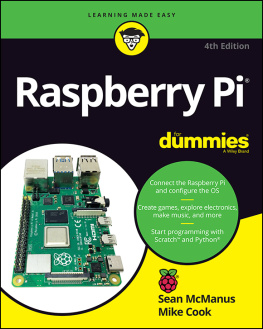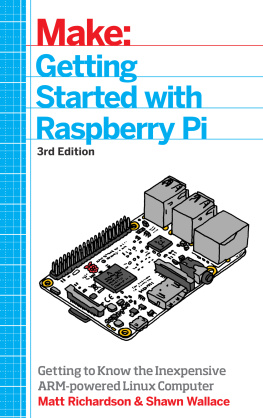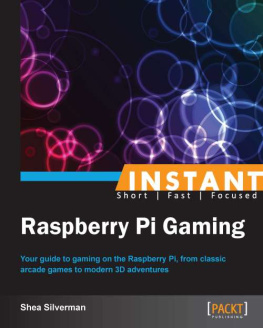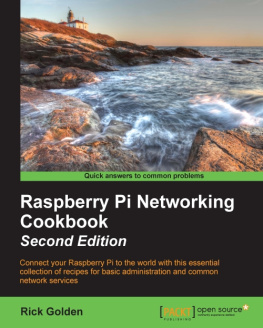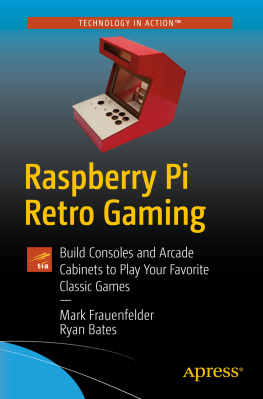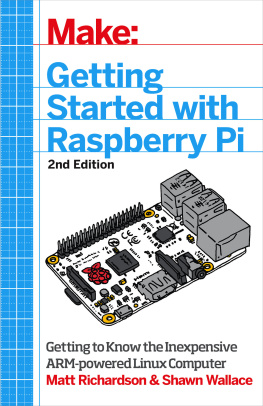Everything You want to Know About Raspberry Pi
Copyright 2015 by Big K Publishing - All rights reserved.
This document is geared towards providing exact and reliable information in regards to the topic and issue covered. The publication is sold with the idea that the publisher is not required to render accounting, officially permitted, or otherwise, qualified services. If advice is necessary, legal or professional, a practiced individual in the profession should be ordered.
- From a Declaration of Principles which was accepted and approved equally by a Committee of the American Bar Association and a Committee of Publishers and Associations.
In no way is it legal to reproduce, duplicate, or transmit any part of this document in either electronic means or in printed format. Recording of this publication is strictly prohibited and any storage of this document is not allowed unless with written permission from the publisher. All rights reserved.
The information provided herein is stated to be truthful and consistent, in that any liability, in terms of inattention or otherwise, by any usage or abuse of any policies, processes, or directions contained within is the solitary and utter responsibility of the recipient reader. Under no circumstances will any legal responsibility or blame be held against the publisher for any reparation, damages, or monetary loss due to the information herein, either directly or indirectly.
Respective authors own all copyrights not held by the publisher.
The information herein is offered for informational purposes solely, and is universal as so. The presentation of the information is without contract or any type of guarantee assurance.
The trademarks that are used are without any consent, and the publication of the trademark is without permission or backing by the trademark owner. All trademarks and brands within this book are for clarifying purposes only and are the owned by the owners themselves, not affiliated with this document.
Contents
: Introduction of Raspberry Pi
: Raspberry Pi 101: What can I do with it?
: Best operating systems for Raspberry Pi
: Learn to program with Raspberry Pi
: Using Raspberry Pi in analogue world
: Troubleshooting Raspberry Pi
7: Some Awesome Projects on Raspberry Pi
Introduction
I want to thank you and congratulate you for downloading the book, Everything You need to Know about Raspberry Pi .
Raspberry Pi is the worlds compact computer that runs on open source Linux. Now, you can learn using this amazing computer in Everything You need to Know about Raspberry Pi. Whether you are an educator, hobbyist or hacker, this guide will help get your hands on Raspberry Pi.
This book consists of 7 chapters that will help you know everything about Raspberry PI. You will learn how to connect Raspberry Pi to other peripherals, install operating system, learn basic programming, use this device in analogue world and create awesome projects. The final chapters of this book contain useful information on how to troubleshoot the device and some awesome projects to try.
Thanks again for downloading this book, I hope you enjoy it!
Chapter 1 Introduction of Raspberry Pi
Raspberry Pi is a credit-card sized computer that can be plugged into a TV or computer monitor. It can be said as the most inspiring electronic devices available today. Despite of having many other computing devices such as smartphones, tablets and gaming consoles, people are getting attracted towards these mini devices. You can play exciting games and create stunning apps with Raspberry Pi. This little device is capable of doing amazing things, which you would never expect from such a tiny machine. Thousands of people are taking their first steps in computer science are getting benefited from Raspberry Pi.
In this book, you will find out everything you want to know about the Raspberry Pi. If you want to become a computer programmer, hacker or games developer, then Raspberry Pi will be a very good introduction to your work as well as a very powerful tool in your adventures. This book is meant for people of all skills levels and all those who want to know about Raspberry Pi and its applications in detail. You will discover some interesting projects and experiments in this book and you will be surprised to see what Raspberry Pi can help you can achieve.
So, lets get started
Introduction
Raspberry Pi is a series of computers that were developed in United Kingdom by Raspberry Foundation with the purpose of promoting basic computer knowledge in schools. Originally, Raspberry Pi and Raspberry Pi2 were manufactured through licensed manufacturing agreement in several board configurations with same hardware across all the manufacturers - Egoman, RS Components and Newark Element14.
This electronic device comes with all the essential tools that are required to make your own software. Moreover, this device is available at a very low cost to allow users to experiment with confidence without worrying about damaging the computer. Lots of people are discovering new ways to use it and excited about its capacity. Raspberry Pi suits well for projects that doesnt require large amount of processing power and will benefit from small size.
Raspberry Pi is a powerful and easy to use tool for aspiring computer scientists and researchers. If you want to know how computers work and learn computing skills, this is the best starter kit you can get your hands on. Raspberry Pi projects include projects in the topics of robotics, remote control panels, embedded projects and motion sensing camera.
The Raspberry Pi has become incredibly popular among educators, hobbyists, academics and OEMs. It has great performance and is highly versatile, which makes it incredibly popular among users. You have a wide choice of operating systems that can help you tackle any projects that you take on.
Specifications
Raspberry PI is a System-on-chip (SoC) with multiple connecting ports. It can be operated by hooking up a USB keyboard and plugging into the television. The SoC used in Raspberry Pi was similar to the ones used in older model smartphones. Currently, there are two versions of Raspberry Pi.
Originally, this device was based on the Broadcom BCM2835 SoC that used to have 700 MHz ARM1176JZF-S processor, RAM and VideoCore IV GPU. The performance of first generation Raspberry Pi under this configuration was equivalent to the performance of Pentium II processor.
The next version of Raspberry Pi was based on Broadcom BCM2836 SoC, which includes a quad-core Cortex-A7 CPU and 1GB Ram. Its performance was 5-6 times much higher than that of the first generation Raspberry Pi. As for specifications, the later generation Raspberry Pi come with VideoCore IV processing unit along with either ARMv6 compatible CPU or ARMv7 quad-core CPU, 1GB RAM. The SoC includes a 32 bit ARM1176JZFS processor that is clocked at 700 MHz and is powered by 5V micro USB charger.
Currently, Raspberry Pi is available for purchase with features like HDMI and composite video outputs, 10/100 Ethernet port, 2 USB 2.0 ports, SD card slot, analogue audio output and GPIO(General Purpose I/O Expansion Board) connector. The newer version of firmware comes with a unique feature to choose between 5 overclock presets that tries to give the best performance out of the SoC.
To run Raspberry Pi, you only need a few accessories. Remember, Raspberry Pi was designed to be used with whatever accessories you have at home to minimize the cost of getting started. Once you are done, you can do all the things you can do on a regular computer. It is a great platform for those who want to learn programming and word processing. There is a Pi store where you can find hundreds of applications. Download down those apps for free by connecting to the internet and start working on interesting projects immediately. Keep reading to find out more about how to get your hands on a Raspberry Pi!


